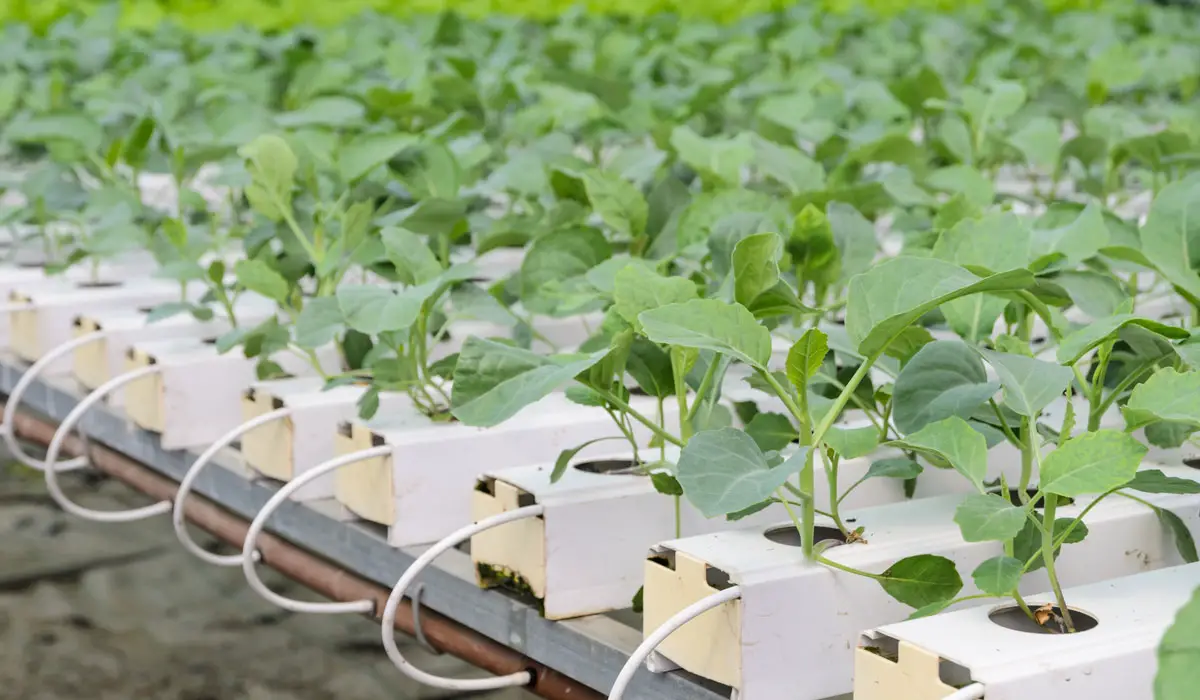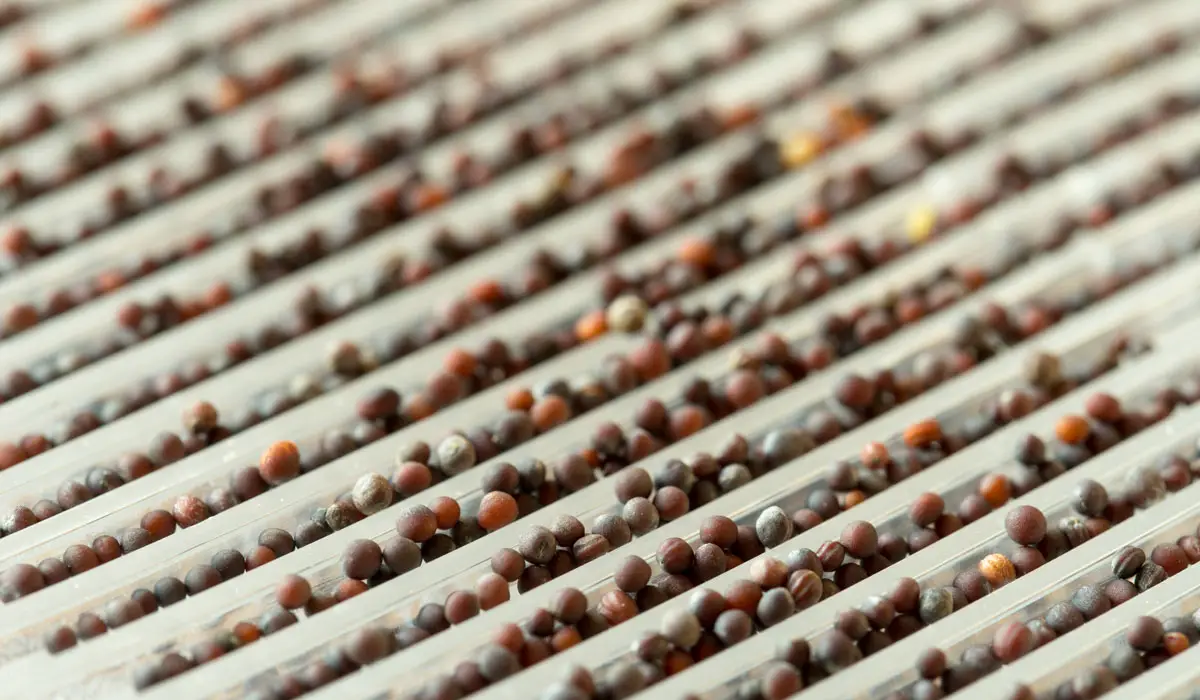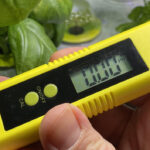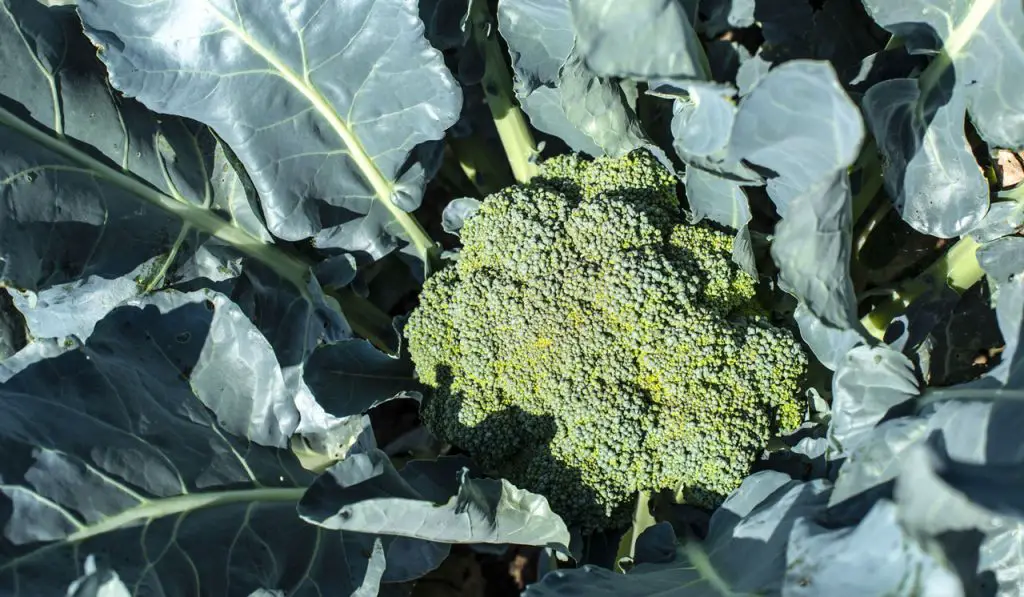The Secret to Growing The Best Hydroponic Broccoli

This post follows our research editorial guidelines.

If you’re looking for a nutritious addition to your home hydroponic setup, it’s hard to go past broccoli. It’s incredibly good for you, and a versatile addition to stir frys, soups and casseroles. But how hard is it to grow in water? Do those luscious green heads need special care?

Table of Contents
Does broccoli grow well in hydroponics?
Broccoli can be grown quite successfully in hydroponics systems. It’s well suited for media bed cultivation, and grows well in deep water systems (DWS). Be sure to space them well, and monitor nutrients as they are heavy feeders.
The Secret to Best Broccoli
Broccoli in hydroponics has two challenges to overcome: keeping the right temperature, and maintaining a good nutrient load in your solution.
“Broccoli is a cool weather plant that typically grows rapidly from the leaf phase to the flower and then seed phase. It will sometimes bolt and grow very tall during times of stress to the plant (which can be caused by high temperatures). By bolting, the plant is attempting to reproduce to the seed stage before it dies off.”
Diane Brady, Michigan State University Horticultural Service
This healthy kitchen staple does best when kept in consistently cool temperatures. It’s tough to manage it growing outdoors but that’s a snap for indoor hydroponics. Keep the broccoli cool and calm and it’ll thrive.
The other tricky bit is the nutrient load. Broccoli is a heavy feeder, and needs to be monitored closely. Too much nitrogen and you’ll get too many leaves leaves and poorly developed heads. But underfeed and the whole plant will struggle.
Starting Broccoli seeds hydroponically

Broccoli seeds germinate readily, and grow at a slow but steady rate once they’ve sprouted. I actually enjoy the sprouts as a nutritionally dense microgreen, an excellent source of vitamins and minerals.
How to Start Broccoli seeds hydroponically
You will need:
- Broccoli seeds
- Starter block or net basket of medium
- Clean, sterile water
- Nursery container
1. Choose your Growing Medium
Before you can get planting, you need something to plant into in the first place – your medium.
Most home growers start seeds in a small moist cube of medium known as a starter block, typically made of rockwool, peat, oasis or coco coir. They’re readily available for purchase. AeroGarden Pods are also incredibly easy to make.
If you’re feeling thrifty, you can plant straight into media beds or net baskets, depending on the system you’ve opted to use. Peat, coco coir and clay pebbles have the right texture to hold onto broccoli seeds without too much fuss.
2. Soak Gowing Medium
Soak your medium overnight in plain water. Seeds contain all the nutrients they need to sprout and don’t really need extra. If you want to be certain, a half or quarter strength diluted nutrient solution is fine.
Pop the seeds in the fridge while the medium is soaking. The brisk chill will let the seeds know its showtime!
3. Plant your Seeds
Plant 3-4 seeds into your medium, at a depth of about ¼ of an inch. If you’re using clay pebbles they can be dropped on the surface of the medium. Broccoli is a reliable sprouter, so don’t worry about them being exposed.
4. Mist to Keep Moist
Next place the starter blocks or net baskets in your nursery container and close the lid. Check daily and mist the blocks if needed so they stay moist enough to sprout. Perlite and clay pellets need a bit of extra support, so put an inch or so of water in the bottom of the container to keep them wet.
5. Keep Seeds Warm
Broccoli seeds take between 3-7 days to sprout. Keep them warm and well-lit during this time – around 75°F (24°C). While broccoli itself enjoys cooler temperatures, baby sprouts are more fragile and will do better if they’re kept warm.
6. Transplant into Growing Medium

The more complex your setup, the longer you need to wait to transplant your seeds.
If you’re using a basket based system, they can be relocated at about 7-10 days after first growth appears. As a general rule I look for the broccoli seedlings “true leaves” to appear, True leaves are ones that appear after the first set of seedling leaves and will resemble a “true” broccoli leaf. Blocks can be placed gently into the baskets entirely, and if you’ve sprouted directly onto the medium you can just move the lot.
Larger, more complex systems need a more mature seedling. If you’re moving the seedling to a media bed, allow it to reach 6 inches in height with four or five adult leaves before you replant.
Starting hydroponic Broccoli from a cutting
Surprisingly, you can grow broccoli from a bare length of stem. It’s not as easy as growing from seeds, but with a bit of patience you can turn kitchen scraps into a whole new plant.
You will need:
- A fresh broccoli stem that has not hardened
- Clear vessel, like a jar or glass
- Clean water
1. Choose your cutting
You will need a length of broccoli stem around seven inches long, with no leaves or sprouts on top. It’s easiest achieved by taking a cutting of a live plant, but with luck you can find a suitable length from common grocery store broccoli.
Remove all leaves, side shoots, and florets, and make sure the bottom cut is clean, with no ragged edges.
2. Water
Place your broccoli cutting in a container of clean water. You’ll need to keep a close eye on it, so clear is best. Make sure about half the stem is under water.
3. Monitor water quality
Put the stem in a well lit, warm environment away from direct light. It needs a lot of light – six hours a day or more.
You’ll need to monitor the stem closely, as its common for them to rot long before they root. Change the water if it looks cloudy or turns yellow. It can take a few days to two weeks to grow new roots.
4. Transplant once roots form
Once you have two- to three-inch-long roots, you can move the broccoli to your medium. Spread the roots well and ensure the stem has good clearance above the medium.
FAQ
How much Light does Hydroponic Broccoli Need?
Broccoli loves good bright light, but they do poorly when overheated. I find high efficiency lights like LED grow lights are perfect for broccoli. They generate less waste heat and will help your broccoli keep its cool. Unlike hydroponic tomatoes broccoli is a cool weather crop. Aim for long intervals of 14-16 hours where possible.
What Should the Water pH Be For Hydroponic Broccoli?

A neutral pH is best for broccoli. They don’t need a lot of acidity in the soil, and will struggle to thrive if the pH moves outside of a 6.0 to 6.8 range. You’ll need to keep their water cool, too, at no more than 68°F (20°C).
What Is The Best Growing Medium For Hydroponic Broccoli?

Structured mediums with good texture for roots to hold are ideal. They do very well in media bed cultivation, though deep water systems work too. Use a blend of perlite, vermiculite and coco coir for best results, but any dense medium with a good water holding capacity will get the job done.
Providing the right Nutrients

Those vitamins and minerals that make broccoli such a good part of our diet have to come somewhere, and that’s from their nutrient solution. They’re heavy feeders, and poor nutrition can result in a variety of disorders, including hollow stems and bud branching issues.
Nitrogen, potassium and calcium deficiencies are the three big ones to watch for. You can help prevent this by planting in organic substrates like coco coir or peat, and regularly checking the composition of your solution. Aim for an electrical conductivity of 2.7 to 3.5, and a PPM of between 1960-2450. You’ll really need to keep an eye on your solution for good results.
You’ll also need to make sure to change things up as the head develops. Too much nitrogen will prompt leaves, not edible flowers, so you’ll need to change to a phosphorus heavy blend once that head starts to come in.
Pruning Hydroponic Broccoli
It’s not uncommon for broccoli in hydroponics setups to send out lateral branches. To maintain a good, tight head you’ll need to trim these sideways shoots from the plant. They’re essentially early harvest, a crisp and delicious treat.
Temperature Control
You’ll need to keep your broccoli cool, as it’s prone to bolting when warm. Best growth is achieved around 60°F (18°C). Not only will cool temperatures prevent the broccoli becoming leggy and inedible, but the resulting crop will be sweeter, too.
Spacing Requirements
Broccoli needs lots of space if you’re going to develop a good, wide head. Aim for around 3 – 5 plants per square foot. Crowd them and you’ll have smaller results.
Pests Control
All manner of caterpillars love to eat broccoli. Cabbage loopers, army worms, diamond back caterpillars, you name it. They can’t get enough.
Aphids are another serious pest of broccoli, and have an alarming tendency to sneak their way into even well secured indoor plantings. Likewise whiteflies are persistent enough to make it inside with irritating ease.
All can be safely treated with neem oil, horticultural oil or commercial insecticides. Personally I like removing pests by hand and flicking them out a window – it’s very satisfying to get a bit of justice against these rapacious nibblers!
Common Broccoli Diseases
As a cool weather crop, it’s easier to avoid many of the fungal diseases that love hydroponics setups. You’ll also avoid many of the soil borne diseases that attack broccoli too.
Good ventilation is a must however to prevent mildew. This appears as patches of crusty yellow areas on the leaves. Cruciferous vegetables like broccoli do suffer a bit from ityou can prevent it by keeping crops well ventilated. An all round crop control spray isn’t a bad treatment, as well as sulphur based powders.
Final thoughts
Hydroponic broccoli is a rewarding crop, well worth the effort. Even just sprouting indoors gives you an edge. The ability to control temperature and pests allows the experienced grower to produce reliable, nutritious vegetables all year round, a real feat for this cold weather stalwart.
